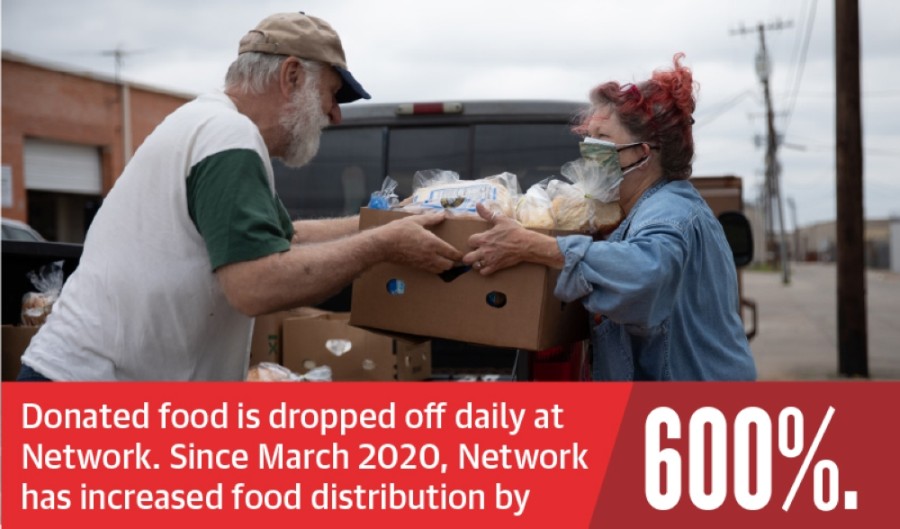Banner image: Railroad Avenue in Dolores, Colorado. (Credit: CC photo by Jeffrey Beall via Wikimedia Commons)
At the height of the COVID-19 pandemic in 2020, Elizabeth Philbrick and her husband Jared Scott weren’t sure about the future of their new business in Dolores, Colorado.
The couple had just opened EsoTerra Cider out of what used to be the Mountain Sun Juice factory in Dolores—a town with a population of less than 1,000 people in southwest Colorado.
EsoTerra Cider serves up libations with fanciful names like the Quercus Schmercus, Bear Bait and Apre All Day. But as infections were raging across the state, the couple’s business was having trouble covering expenses. And for bureaucratic reasons, the cidery wasn’t eligible for COVID-19 relief loans from the government.
So Philbrick and Scott put out a call for help or advice on a new resource: an online tool for small business owners called the Startup Colorado Network. The network was launched in 2020 by Startup Colorado, an outreach program within Silicon Flatirons at CU Boulder. It connects rural entrepreneurs with business resources, as well as fellow business owners, mentors and funders.
For EsoTerra, which at the height of apple season employs about seven people, it paid off.
Within days, they had received a flood of comments and were eventually able to apply for and receive a loan from a local economic develop fund.
“As an entrepreneur, having someone to help walk you through those first few years is immensely important,” Philbrick said. “If you think it takes a village to raise a child, it takes a lot more than just one village to raise a business off the ground.”
Delaney Keating, managing director of Startup Colorado, added that her team is also made up of people who live and work in rural Colorado and have a passion for these small towns. While some of these communities have gone through growth spurts in recent years, others are losing residents—posing challenges to people who want to start new businesses there.
“Rural Colorado isn’t always underserved or underresourced like many people seem to believe,” Keating said. “There are a lot of resources, but they’re often variable, so we need to connect them in better ways.”
Missing generation
John Wittler is tuned into those challenges. He grew up in Pritchett, Colorado, in the southeast corner of the state. Today, he’s a regional coordinator for Ogallala Commons, a non-profit organization that works to “reinvigorate communities and commonwealths in the Great Plains Region.”
The story, he said, is a familiar one to anyone who watches the local news in Colorado: Young people in some of the state’s small towns are leaving to seek out job opportunities elsewhere. Baca County, home to Pritchett, had a population of almost 8,000 people in 1950. Today, that number is closer to 3,800, and the State of Colorado projects that it will fall to 2,800 by 2050.
“You’ve got an aging population in these communities, and it points to almost a missing generation of leaders,” Wittler said.
There are a lot of reasons why starting a business in rural Colorado can be difficult. Many small towns lack the infrastructure that larger cities boast for launching new projects, and the labor force can be small. But there are benefits, too. These communities are often tight-knit and want to see their residents succeed, Wittler said. There are also plenty of young people who want to live and work where they grow up—they just need the chance.
“As we change to a digital society instead of an all-physical one, there are opportunities for entrepreneurship in rural communities that haven’t existed before,” Wittler said.
Building ecosystems
The Startup Colorado organization has worked to foster that kind of entrepreneurial environment since 2011. The group collaborates with what it calls “ecosystem builders,” such as state government agencies, small business development councils and organizations like Ogallala Commons, to provide guidance to Colorado entrepreneurs. Its programs have focused on everything from coordinating statewide regional resource calls during the pandemic to sponsoring educational events.
The group’s new online network, which was designed in collaboration with rural Coloradans like Wittler, is a central hub where people can meet and share ideas. If a user wants to find marketing advice or get a good recommendation for a CFO in Yuma County, they can post a message to the site. The tool also allows members to form their own mini-groups focused on specific regions or industries. There are currently smaller networks dedicated to local food and agriculture and the outdoor industry, among others.
And while the resource is still in its infancy, it’s been growing steadily with roughly 467 registered users as of March 2021. Keating—who herself lives in the small town of Gunnison—said the project is like a “startup for startups.”
“The work can be intense, but we hustle hard,” Keating said. “We understand the pain points of these rural entrepreneurs, and we also understand how these ecosystem builders work hard with limited resources to reach people in their regions.”
Wittler thinks that the hard work is paying off.
“The Startup team has been amazing to work with,” he said. “Their vision has great alignment with what I think needs to happen in rural Colorado.”
A lot of love
For Philbrick, starting a small business in rural Colorado has been a love story of sorts.
She and her now-husband met in 2015 when they were both graduate students at Colorado State University. They moved to Dolores so that they could start a family, while also tapping into some of Montezuma County’s hidden gems: historic apple orchards, many of which date back to the early 1900s, that grow rare fruit varieties with names like “jasper jelly” and “the transcendent.”
And it’s a passion that they now get to share with someone new: their first child, Avery.
“Our little 1-year-old was out on the porch with Jared all summer,” Philbrick said, “just eating a bushel of apples all day.”
"network" - Google News
March 31, 2021 at 10:35PM
https://ift.tt/3m9fQYH
New online network connects and supports Colorado's rural entrepreneurs - CU Boulder Today
"network" - Google News
https://ift.tt/2v9ojEM
Shoes Man Tutorial
Pos News Update
Meme Update
Korean Entertainment News
Japan News Update





:strip_exif(true):strip_icc(true):no_upscale(true):quality(65)/cloudfront-us-east-1.images.arcpublishing.com/gmg/4H4UFSPDSZEJ3F76XYMHNGEL7U.PNG)









